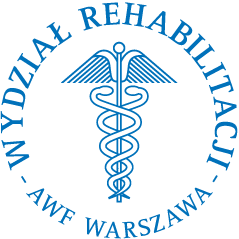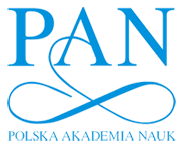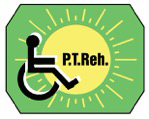


|
Current issue
Archive
Manuscripts accepted
About the journal
Editorial board
Reviewers
Abstracting and indexing
Contact
Instructions for authors
Publication charge
Ethical standards and procedures
Editorial System
Submit your Manuscript
|
2/2023
vol. 37 Review paper
The effects of action observation in the lower limb landing biomechanics: a systematic review and meta-analysis1.
Department of Medicine, University of Udine, Udine, Italy
Advances in Rehabilitation, 2023, 37(2), 9–20
Online publish date: 2023/06/06
Article files
- 2023-02-ar-02.pdf
[1.88 MB]
- Appendix 1_Conte.pdf
[0.08 MB]
- Appendix 2_Conte.pdf
[0.15 MB]
ENW EndNote
BIB JabRef, Mendeley
RIS Papers, Reference Manager, RefWorks, Zotero
AMA
APA
Chicago
Harvard
MLA
Vancouver
1. Larwa J, Stoy C, Chafetz RS, Boniello M, Franklin C. Stiff Landings, Core Stability, and Dynamic Knee Valgus: A Systematic Review on Documented Anterior Cruciate Ligament Ruptures in Male and Female Athletes. Int J Environ Res Pub Health. 2021; 18(7): 3826. 2.
Gokeler A, Neuhaus D, Benjaminse A, Grooms DR, Baumeister J. Principles of Motor Learning to Support Neuroplasticity After ACL Injury: Implications for Optimizing Performance and Reducing Risk of Second ACL Injury. Sports Med. 2019; 49(6): 853−65. 3.
Dai B, Garrett WE, Gross MT, Padua DA, Queen RM, Yu B. The effect of performance demands on lower extremity biomechanics during landing and cutting tasks. J Sport Health Sci. 2019; 8(3): 228−34. 4.
Hewett TE, Myer GD, Ford KR, Paterno MV, Quatman CE. Mechanisms, prediction, and prevention of ACL injuries: Cut risk with three sharpened and validated tools. J Orthop Res. 2016; 34(11): 1843−55. 5.
Yu B, Garrett WE. Mechanisms of non-contact ACL injuries. Br J Sports Med. 2007; 41(1): 47−51. 6.
Dai B, Herman D, Liu H, Garrett WE, Yu B. Prevention of ACL injury, part I: injury characteristics, risk factors, and loading mechanism. Res Sports Med. 2012; 20(3-4): 180−97. 7.
Gokeler A, Benjaminse A, Seil R, Kerkhoffs G, Verhagen E. Using principles of motor learning to enhance ACL injury prevention programs. Sports Orthop Traumatol. 2018; 34(1): 23−30. 8.
Wulf G, Shea C, Lewthwaite R. Motor skill learning and performance: a review of influential factors. Med Educ. 2010; 44(1): 75–84. 9.
Piccoli A, Rossettini G, Cecchetto S, Viceconti A, Ristori D, Turolla A, et al. Effect of Attentional Focus Instructions on Motor Learning and Performance of Patients with Central Nervous System and Musculoskeletal Disorders: a Systematic Review. J Funct Morphol Kinesiol. 2018; 3(3): 40. 10.
Hemayattalab R. Effects of self-control and instructor-control feedback on motor learning in individuals with cerebral palsy. Res Dev Disabil. 2014; 35(11): 2766−72. 11.
Rendos NK, Zajac-Cox L, Thomas R, Sato S, Eicholtz S, Kesar TM. Verbal feedback enhances motor learning during post-stroke gait retraining. Top Stroke Rehabil. 2021; 28(5): 362−77. 12.
Mizuguchi N, Kanosue K. Changes in brain activity during action observation and motor imagery: Their relationship with motor learning. Prog Brain Res. 2017; 234: 189−204. 13.
Ge S, Liu H, Lin P, Gao J, Xiao C, Li Z. Neural basis of action observation and understanding from first-and third-person perspectives: an fMRI study. Front Behav Neurosci. 2018; 12: 283. 14.
Grèzes J, Decety J. Functional anatomy of execution, mental simulation, observation, and verb generation of actions: a meta-analysis. Hum Brain Mapp. 2001; 12(1): 1−19. 15.
Bassolino M, Sandini G, Pozzo T. Activating the motor system through action observation: is this an efficient approach in adults and children? Dev Med Child Neurol. 2015; 57(2): 42−5. 16.
Fu J, Zeng M, Shen F, Cui Y, Zhu M, Gu X, Sun Y. Effects of action observation therapy on upper extremity function, daily activities and motion evoked potential in cerebral infarction patients. Medicine (Baltimore). 2017; 96(42): e8080. 17.
Park EC, Hwangbo G. The effects of action observation gait training on the static balance and walking ability of stroke patients. J Phys Ther Sci. 2015; 27(2): 341−4. 18.
Celnik P, Webster B, Glasser DM, Cohen LG. Effects of action observation on physical training after stroke. Stroke. 2008; 39(6): 1814−20. 19.
Ertelt D, Small S, Solodkin A, Dettmers C, McNamara A, Binkofski F, Buccino G. Action observation has a positive impact on rehabilitation of motor deficits after stroke. Neuroimage. 2007; 36(2): 164−73. 20.
Caligiore D, Mustile M, Spalletta G, Baldassarre G. Action observation and motor imagery for rehabilitation in Parkinson's disease: A systematic review and an integrative hypothesis. Neurosci Biobehav Rev. 2017; 72: 210−22. 21.
Pelosin E, Avanzino L, Bove M, Stramesi P, Nieuwboer A, Abbruzzese G. Action observation improves freezing of gait in patients with Parkinson's disease. Neurorehabil Neural Repair. 2010; 24(8): 746−52. 22.
Shea CH, Wright DL, Wulf G, Whitacre C. Physical and observational practice afford unique learning opportunities. J Mot Behav. 2000; 32(1): 27−36. 23.
Frank C, Kim T, Schack T. Observational practice promotes action-related order formation in long-term memory: Investigating action observation and the development of cognitive representation in complex motor action. J Mot Learn Dev. 2018; 6(1): 53–72. 24.
Park SD, Song HS, Kim JY. The effect of action observation training on knee joint function and gait ability in total knee replacement patients. J Exerc Rehabil. 2014; 10(3): 168−71. 25.
Bellelli G, Buccino G, Bernardini B, Padovani A, Trabucchi M. Action observation treatment improves recovery of postsurgical orthopedic patients: evidence for a top-down effect? Arch Phys Med Rehabil. 2010; 91(10): 1489−94. 26.
Villafañe JH, Pirali C, Isgrò M, Vanti C, Buraschi R, Negrini S. Effects of Action Observation Therapy in Patients Recovering From Total Hip Arthroplasty Arthroplasty: A Prospective Clinical Trial. J Chiropr Med. 2016; 15(4): 229−34. 27.
Arundale AJH, Silvers-Granelli HJ, Myklebust G. ACL injury prevention: Where have we come from and where are we going? J Orthop Res. 2022; 40(1): 43−54. 28.
Page MJ, McKenzie JE, Bossuyt P M, Boutron I, Hoffmann TC, Mulrow CD, et al. The PRISMA 2020 statement: an updated guideline for reporting systematic reviews BMJ 2021; 372 : n71 29.
Ouzzani M, Hammady H, Fedorowicz Z, Elmagarmid A. Rayyan-a web and mobile app for systematic reviews. Syst Rev. 2016; 5(1): 210. 30.
Sterne JAC, Savović J, Page MJ, Elbers RG, Blencowe NS, Boutron I, et al. RoB 2: a revised tool for assessing risk of bias in randomised trials. BMJ. 2019; 366: l4898. 31.
McGuinness L, Higgins JPT. Risk-of-bias VISualization (robvis): An R package and Shiny web app for visualizing risk-of-bias assessments. Res Syn Meth. 2020: 1–7. 32.
Dallinga J, Benjaminse A, Gokeler A, Cortes N, Otten E, Lemmink K. Innovative Video Feedback on Jump Landing Improves Landing Technique in Males. Int J Sports Med. 2017; 38(2): 150−8. 33.
Etnoyer J, Cortes N, Ringleb SI, Van Lunen BL, Onate JA. Instruction and jump-landing kinematics in college-aged female athletes over time. J Athl Train. 2013; 48(2): 161−71. 34.
Munro A, Herrington L. The effect of videotape augmented feedback on drop jump landing strategy: Implications for anterior cruciate ligament and patellofemoral joint injury prevention. Knee. 2014; 21(5): 891-5. 35.
Welling W, Benjaminse A, Gokeler A, Otten B. Enhanced retention of drop vertical jump landing technique: A randomized controlled trial. Hum Mov Sci. 2016; 45: 84−95. 36.
Benjaminse A, Postma W, Janssen I, Otten E. Video Feedback and 2-Dimensional Landing Kinematics in Elite Female Handball Players. J Athl Train. 2017; 52(11): 993−1001. 37.
Oñate JA, Guskiewicz KM, Marshall SW, Giuliani C, Yu B, Garrett WE. Instruction of jump-landing technique using videotape feedback: altering lower extremity motion patterns. Am J Sports Med. 2005; 33(6): 831−42. 38.
Padua DA, Marshall SW, Boling MC, Thigpen CA, Garrett WE Jr, Beutler AI. The Landing Error Scoring System (LESS) Is a valid and reliable clinical assessment tool of jump-landing biomechanics: The JUMP-ACL study. Am J Sports Med. 2009;3 7(10): 1996−2002. 39.
Arms SW, Pope MH, Johnson RJ, Fischer RA, Arvidsson I, Eriksson E. The biomechanics of anterior cruciate ligament rehabilitation and reconstruction. Am J Sports Med. 1984; 12(1): 8−18. 40.
Li G, Zayontz S, Most E, DeFrate LE, Suggs JF, Rubash HE. In situ forces of the anterior and posterior cruciate ligaments in high knee flexion: an in vitro investigation. J Orthop Res. 2004; 22(2): 293−7. 41.
Herzog W, Read LJ. Lines of action and moment arms of the major force-carrying structures crossing the human knee joint. J Anat. 1993; 182(2): 213−30. 42.
Kernozek TW, Torry MR, VAN Hoof H, Cowley H, Tanner S. Gender differences in frontal and sagittal plane biomechanics during drop landings. Med Sci Sports Exerc. 2005; 37(6): 1003−12. 43.
Chappell JD, Yu B, Kirkendall DT, Garrett WE. A comparison of knee kinetics between male and female recreational athletes in stop-jump tasks. Am J Sports Med. 2002; 30(2): 261−7. 44.
Hewett TE, Myer GD, Ford KR, Heidt RS Jr, Colosimo AJ, McLean SG, et al. Biomechanical measures of neuromuscular control and valgus loading of the knee predict anterior cruciate ligament injury risk in female athletes: a prospective study. Am J Sports Med. 2005; 33(4): 492−501. 45.
Berns GS, Hull ML, Patterson HA. Strain in the anteromedial bundle of the anterior cruciate ligament under combination loading. J Orthop Res. 1992; 10(2): 167−76. 46.
Markolf KL, Burchfield DM, Shapiro MM, Shepard MF, Finerman GA, Slauterbeck JL. Combined knee loading states that generate high anterior cruciate ligament forces. J Orthop Res. 1995; 13(6): 930−5. 47.
Fleming BC, Renstrom PA, Beynnon BD, Engstrom B, Peura GD, Badger GJ, Johnson RJ. The effect of weightbearing and external loading on anterior cruciate ligament strain. J Biomech. 2001; 34(2): 163−70. 48.
Yu B, Lin CF, Garrett WE. Lower extremity biomechanics during the landing of a stop-jump task. Clin Biomech (Bristol, Avon). 2006; 21(3): 297−305. 49.
Zduński S, Rongies W, Ziółkowski M, Kozieł T, Kazimierski P, Hałaj R, Sierdziński J. Assessment of knee joint range of motion and the level of pain in patients after arthroscopic ACL reconstruction in the selected physiotherapy model. Adv Rehab. 2017; 31(3): 41−54.
This is an Open Access journal, all articles are distributed under the terms of the Creative Commons Attribution-NonCommercial-ShareAlike 4.0 International (CC BY-NC-SA 4.0). License (http://creativecommons.org/licenses/by-nc-sa/4.0/), allowing third parties to copy and redistribute the material in any medium or format and to remix, transform, and build upon the material, provided the original work is properly cited and states its license.
|
    |